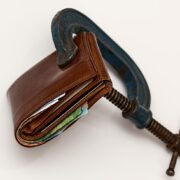In today’s society, debt has become a norm for most people. Many individuals carry credit card balances, car loans, student loans, and mortgages that add up to a substantial amount of debt. However, being in debt is not a good position to be in. It can hinder your ability to save for the future and prevent you from achieving your financial goals. Fortunately, it is possible to get out of debt and achieve financial freedom by following these five steps.
Assess Your Debt Situation
The first step to getting out of debt is to assess your current situation. This means taking an inventory of all your debts, including credit card balances, car loans, student loans, and any other loans. Write down the total amount of each debt, the interest rate, and the minimum payment required each month.
Once you have a clear picture of your debt situation, it’s time to prioritize. Make a list of your debts in order of highest interest rate to lowest. Your goal is to pay off the highest-interest debt first, as it will save you the most money in the long run.
Create a Budget
Once you know how much you owe, it’s time to create a budget. A budget is a financial plan that helps you track your income and expenses. It will help you understand where your money is going and where you can cut back to put more money toward paying off your debt.
Start by listing all your monthly income sources. This includes your salary, any side hustles, and any other income sources. Next, list all your monthly expenses, including rent or mortgage, utilities, groceries, transportation, entertainment, and any other expenses. Be sure to include the minimum payments for each of your debts.
Once you have your income and expenses listed, it’s time to analyze your budget. Look for areas where you can cut back, such as eating out less, cancelling subscriptions you don’t use, or reducing your entertainment expenses. The goal is to find extra money that you can put towards paying off your debt.
Make a Debt Repayment Plan
Now that you have a budget, it’s time to make a debt repayment plan. This plan should prioritize paying off your highest-interest debt first, while still making minimum payments on your other debts.
One popular repayment plan is the snowball method. This method involves paying off what you owe in order of smallest to largest, regardless of interest rate. The idea is that paying off smaller debts first will give you a sense of accomplishment and motivation to keep going.
Another debt repayment plan is the debt avalanche method. This method involves paying off your debts in order of highest interest rate to lowest. The idea is that you’ll save the most money on interest by paying off high-interest debts first.
Whichever debt repayment plan you choose, the key is to stick with it. Make a plan that works for you and your lifestyle, and be consistent in making payments.
Consider Debt Consolidation
If you have multiple debts with high-interest rates, you may want to consider debt consolidation. This involves combining multiple debts into one loan with a lower interest rate. This can make it easier to manage your debt and save you money on interest.
There are several ways to consolidate your debt, including a balance transfer credit card, personal loan, or home equity loan. Be sure to research all your options and choose the one that works best for you.
Build an Emergency Fund
Finally, it’s important to build an emergency fund. An emergency fund is money set aside for unexpected expenses, such as car repairs or medical bills. By having an emergency fund, you’ll be less likely to rely on credit cards or loans when unexpected expenses arise.
Start by setting a goal for your emergency fund, such as three to six months’ worth of living expenses. Then, start saving a small amount each month until you reach your goal. Consider setting up automatic transfers from your checking account to your emergency fund to make saving easier.
Having an emergency fund can also provide peace of mind and reduce financial stress, as you’ll know you have a safety net in case of unexpected expenses or job loss.
In conclusion, getting out of a financial hole and achieving financial freedom is possible with the right plan and mindset. Start by assessing exactly how much you owe, creating a budget, and making a repayment plan that works for you. Consider debt consolidation if it makes sense for your situation and build an emergency fund to protect yourself from unexpected expenses. With determination and persistence, you can become financially free and take control of your financial future.
If you would like to understand how credit scores work click here. Otherwise, I will see you next post.














Comments